Family : Labrisomidae

Text © Giuseppe Mazza

English translation by Mario Beltramini
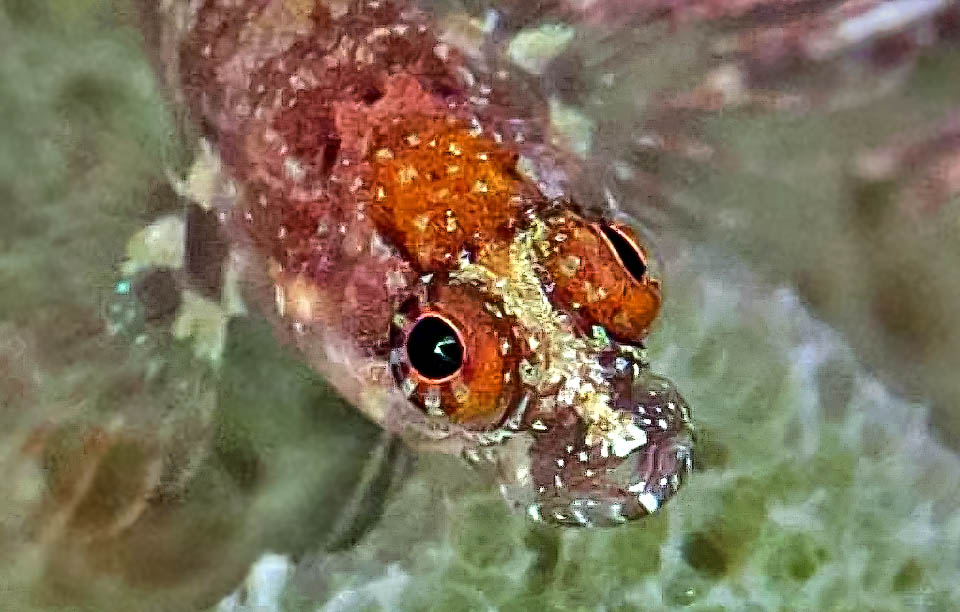
Called Weigt’s blenny or Whitelip blenny, Starksia weigti distinguishes from analogous species due the typical white dots on the lips © Allison & Carlos Estape
The order of the Blenniiformes, inserted in the class of the Actinopterygii, the ray-finned fish, hosts in the family of the Labrisomidae, the same of the imposing Hairy blenny (Labrisomus nuchipinnis), also some unusual little fish with viviparous reproduction belonging to the genera Xenomeda and Starksia.
The males of the latter genus, boasting about forty species, have even modified the first two rays of the anal fin to make it an effective copulatory organ.
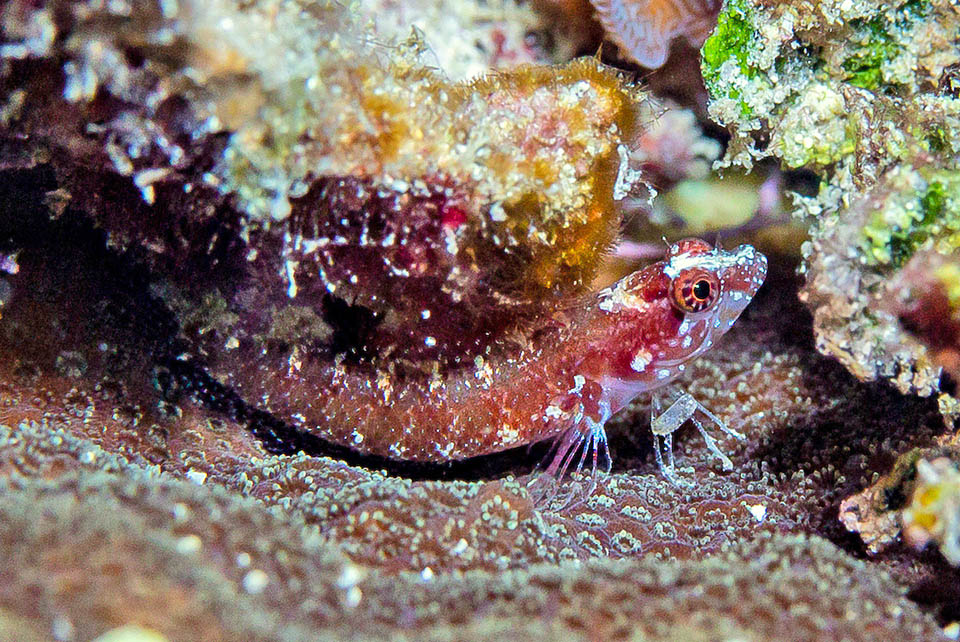
Moreover, but the belly and the pectorals base, the body is protected by scales, instead of the protective mucus of the blennies © Allison & Carlos Estape
Starksia weigti Baldwin & Castillo 2011, is vulgarly known as Whitelip Blenny, due to the characteristic white dots on its lips, or Weigt’s blenny as the specific name indicates in honour to Lee A. Weigt (born in 1960), director of the Analytical Biology Laboratories of the Smithsonian due to his valuable contribution to the research on the DNA of many fish.
Conversely, the genus Starksia, created by Jordan & Evermann in 1896, recalls an ichthyologist of Stanford university, Edwin Chapin Starks (1867-1932), author of several works on the Pacific North-American coast fish.
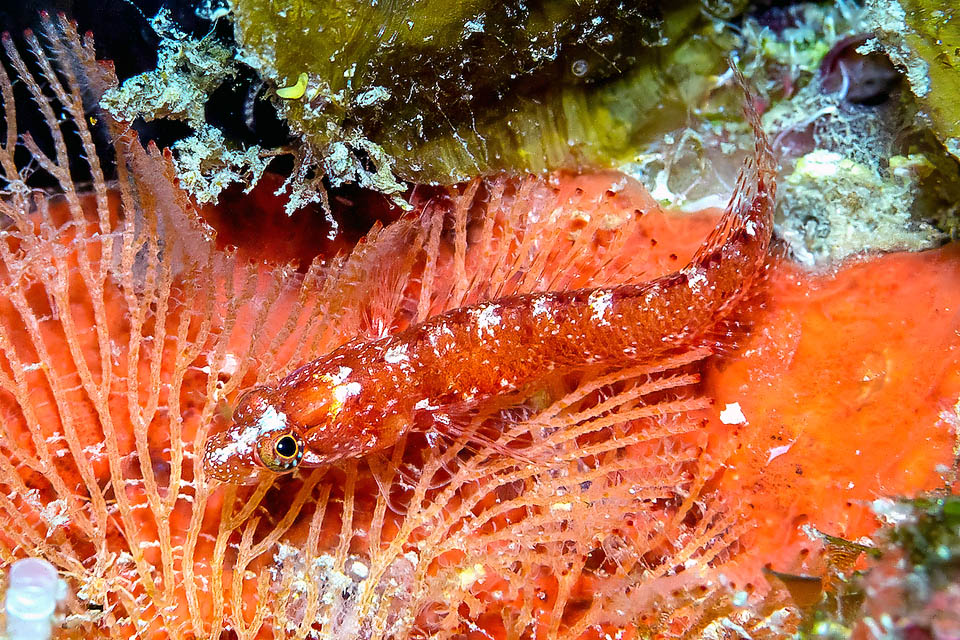
Finally Starksia weigti has a lateral line and the scales, with dark center, emphasize the light parts of the reddish livery © Allison & Carlos Estape
Zoogeography
Starksia weigti is present along the coasts of the northern Caribbean, from Belize up to Honduras.
Ecology-Habitat
Benthopelagic marine species, Starksia weigti is usually found between a depth of 6 and 8 m. But seeing the very modest size, it is not easy to sight it, camouflaged as it is among the madrepores and the rocks covered by weeds.
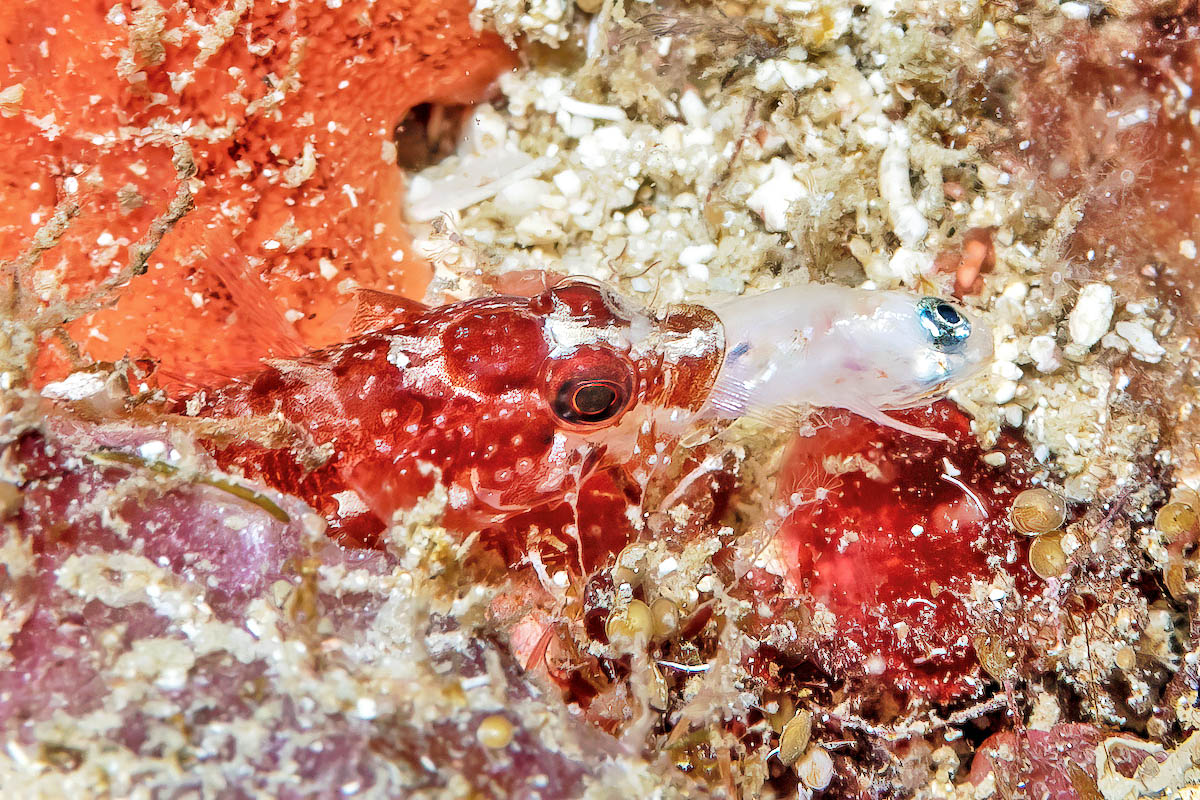
Present only in Belize and Honduras, the males reach at maximum 3,5 cm, feeding on small invertebrates and like here on small fish just metamorphosed © Allison & Carlos Estape
Morphophysiology
In fact, the males of Starksia weigti measure only 2,4 cm, with a maximum of 3,5 cm and the females are usually content with 1,9 cm.
The body is elongated and covered with scales, with the central part dark, instead of the usual protective mucus of the blennies, apart from the belly and the base of the pectoral fins.
On the sides we note a continuous lateral line starting out arched.

Females, here one at the best of its splendour, usually measure less than 2 cm, but the most evident sexual dimorphism stands in the livery © Allison & Carlos Estape
The head has big protruding eyes surmounted by not ramified tendrils, as well as on the nostrils and the nape.
Starksia weigti stands out at first sight from quite similar species, like Starksia lepicoelia, Starksia williamsi and Starksia robertsoni, due to the characteristic round white dots on the lips, emphasized by the presence of melanophores on the chin strap that, as mentioned before, have originated the vulgar name.
All fins have not ramified rays. In the dorsal one, as is typical in the Labrisomidae, the spiny rays do prevail. Here they are 19-20, followed after a notch, by 7-8 unarmed rays.
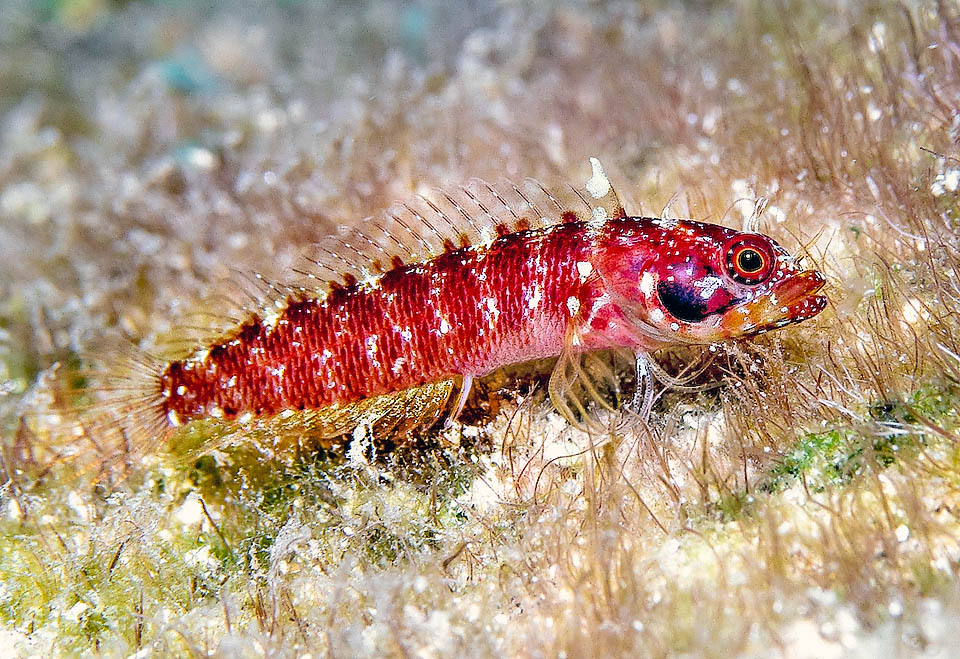
Besides the copulatory organ, here visible just before the anal fin, males in fact have a showy black dot in the rear lower corner of th preoperculum © Allison & Carlos Estape
The pelvic fins, with one hard ray hidden inside and 2 soft, are placed in an advanced position with respect to the pectorals that have 12-13 rays; the caudal has diversified rays but the most interesting fin is the anal with totally 2 spiny rays and 16-17 soft.
As a matter of fact, in the males the first two rays have transformed in the copulatory organ, and free from thorns the male genital papilla measures from 1 to 1,8 mm, the same length or two thirds of the first anal fin.
Also in the livery, light red-brown, with the body having irregular dark bars that create light spots aligned, there is a clear sexual dimorphism.
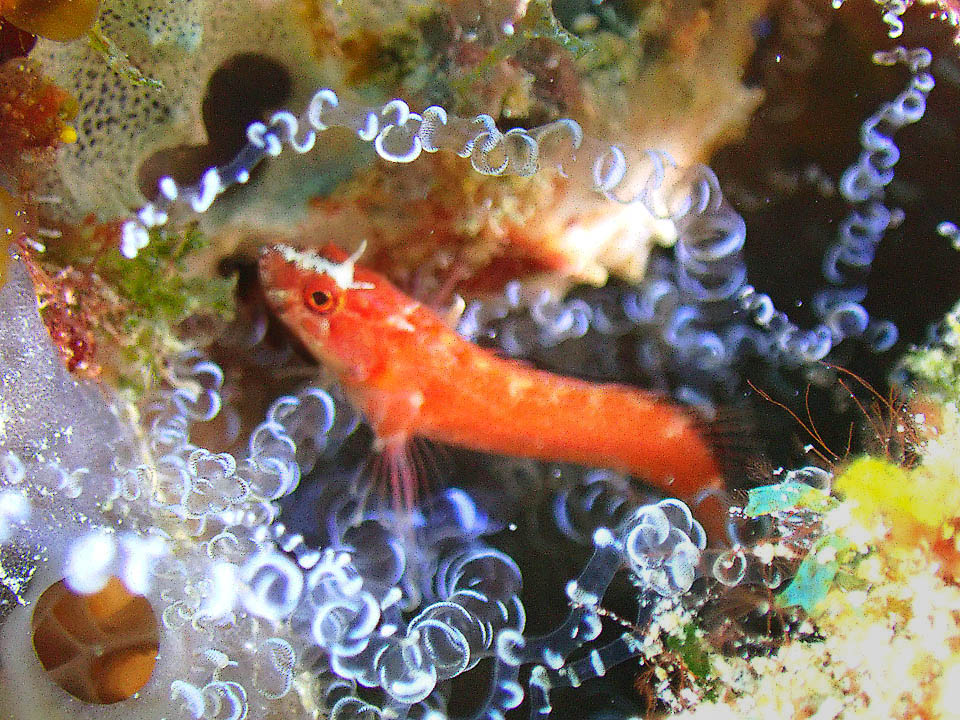
The fertilized females lay chains of babies still wrapped by the egg’s transparent involucre © Robin White
In fact, we note a large black spot in the lower rear corner of the male’s preoperculum that then extends towards the eye with a thin black line.
Ethology-Reproductive Biology
Starksia weigti mainly feeds on invertebrates but also on freshly metamorphosed little fish at their first experiences.
The fertilized females give birth to chains of babies still wrapped by the transparent egg shell. The resilience is not known but the fishing vulnerability, at the minimum, marks just 10 on a scale of 100. Since 2014, Starksia weigti consequently appears as “LC, Least Concern” in the IUCN Red List of the endangered species.
→ For general information about FISH please click here.
→ For general information about BONY FISH please click here
→ For general information about CARTILAGINOUS FISH please click here.
→ To appreciate the BIODIVERSITY of BONY FISH please click here.
→ To appreciate the BIODIVERSITY of CARTILAGINOUS FISH please click here.
